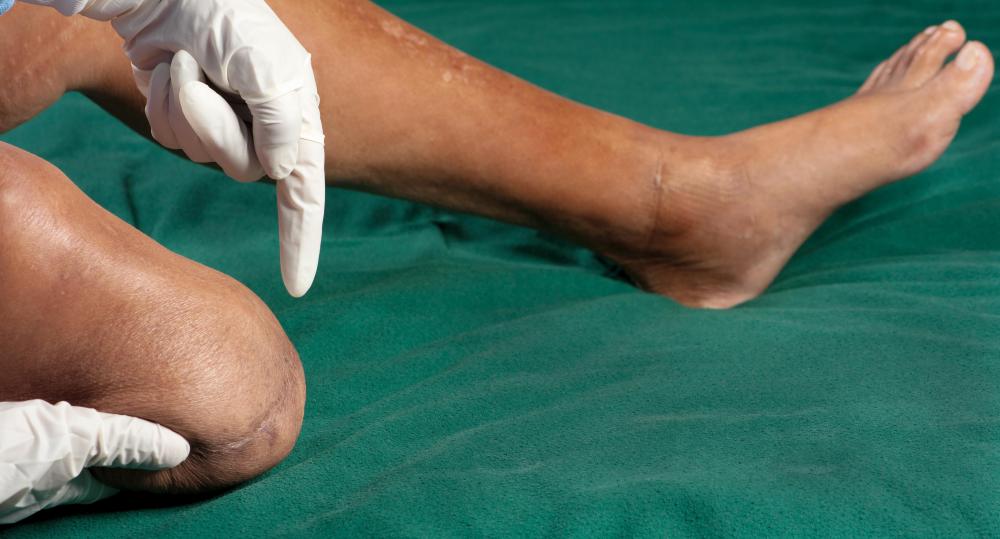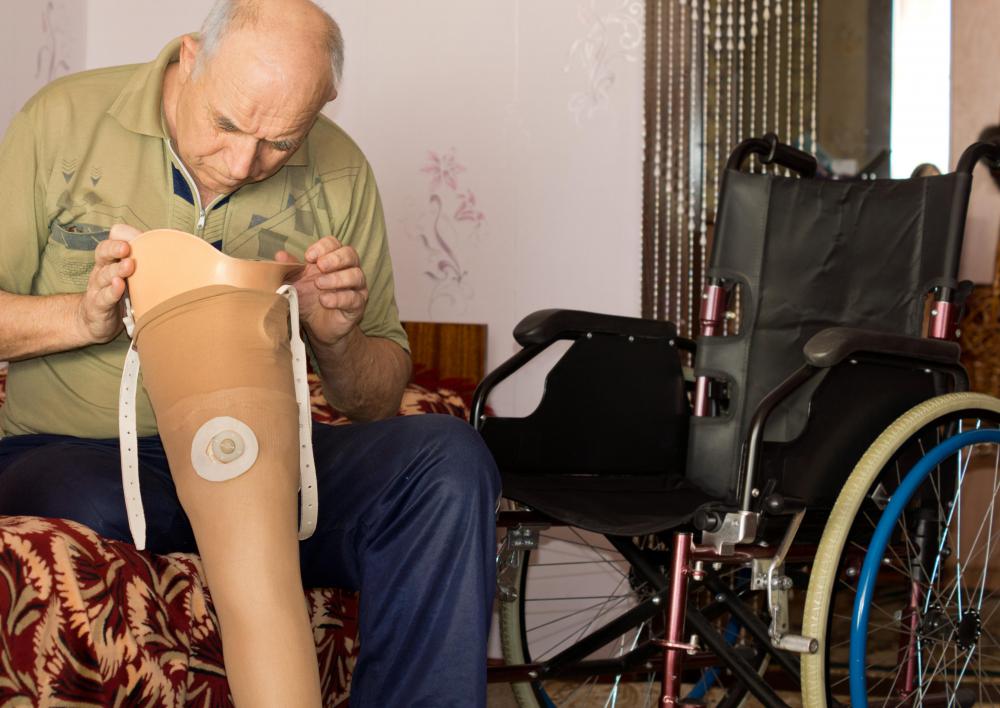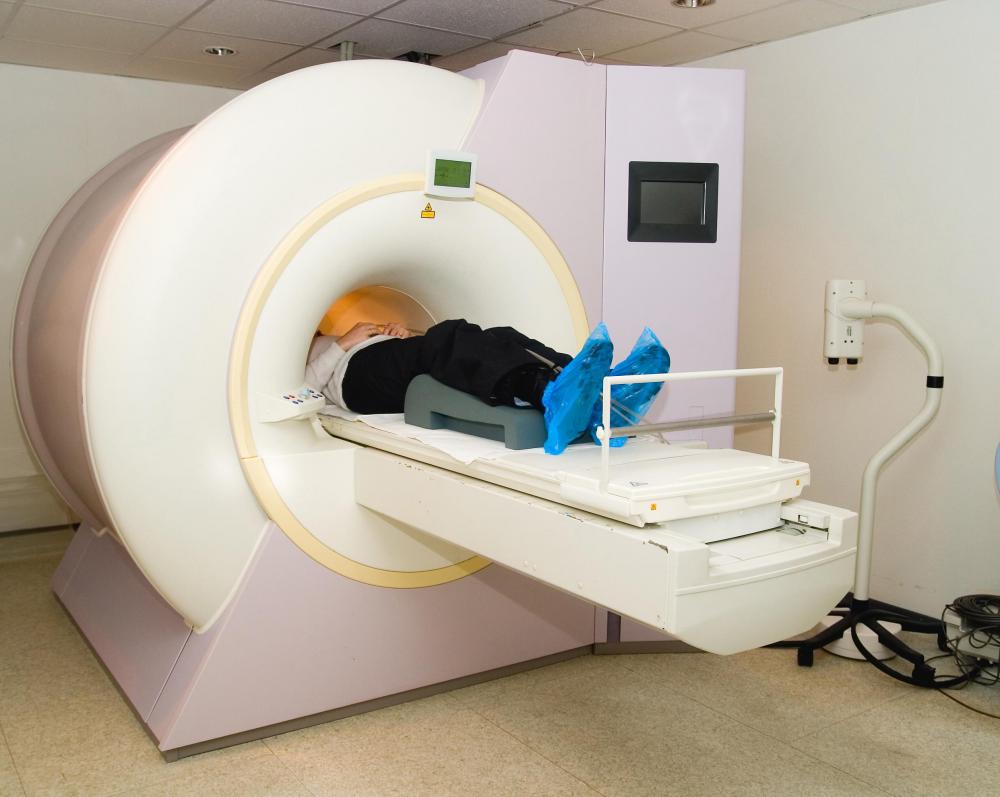At TheHealthBoard, we're committed to delivering accurate, trustworthy information. Our expert-authored content is rigorously fact-checked and sourced from credible authorities. Discover how we uphold the highest standards in providing you with reliable knowledge.
What is a Leg Aneurysm?
A leg aneurysm is an abnormal and potentially life-threatening blood vessel problem that happens when vessels in the thighs, knees, or calves expand to approximately 150% of their normal width. The biggest risk is that the aneurysm will rupture, which can result in very quick blood loss that can lead to paralysis or death. Medical experts aren’t sure exactly what causes these expansions, though certain factors like smoking and inactivity can make them more likely. They don’t always have identifiable symptoms, either, though they are usually visible on certain medical scans. Once they’ve been identified treatment often includes making lifestyle changes, taking specialized medication, and in some cases undergoing surgery to remove the blockage before it has a chance to burst or break free.
Locations

Medical professionals classify leg aneurysms into two types based on where they occur. An aneurysm located in the femoral artery in the thigh is called a femoral aneurysm. The second type is found in the popliteal artery, which supplies blood for the knee, thigh, and calf. When blockages here burst, they often cause bleeding that is immediately life threatening. An aneurysm in this artery also can cause a blood clot, which could require amputation of the leg to prevent the swelling from traveling through the body to the brain. Blood clots that reach the brain can cause serious damage, including stroke and paralysis if not instantaneous death.
Main Causes

Most experts aren’t sure exactly what causes these problems, though certain factors do seem to make them more likely. Atherosclerosis, which is the buildup of fatty substances and plaque in the arteries, seems to make the condition more likely, for instance. People are more prone to this condition when they eat diets high in saturated fats. Trauma to an artery is another contributing factor, and people who smoke also seem to have a higher than normal incidence, likely due to the ways in which tobacco causes restriction and expansion of the body’s blood vessels. Over time this can lead to stress, which can cause blockages. Congenital disorders and certain genetic conditions can also be factors.
Symptoms

A person with a leg aneurysm will not always experience symptoms, making it nearly impossible to know that there is any need for concern. Just the same, there are certain things to watch for in people who suspect they may be at risk. The most common sign of a femoral aneurysm is a pulsing sensation of the in the groin, usually right where the artery begins. Common symptoms of a popliteal aneurysm include pulsing in the back of the knee, watery fluid in the lower leg, foot pain, and skin ulcers on the foot that do not heal. All of these may seem minor, but mentioning them to a doctor or other care provider can be an important part of early identification.
Making a Diagnosis

The diagnosis for a leg aneurysm is made by a medical professional using one or more of several procedures. Detailed images of the aortic artery can be made using a computed axial tomography (CT or CAT) scan. A magnetic resonance imaging (MRI) test might be performed to construct an image of the location where the aneurysm might be. Another method used for diagnosis is an angiography, in which a catheter is used to insert dye into the artery in order to track the blood flow, which in most cases is charted as a three-dimensional image. Aneurysms are usually pretty easy to spot on these sorts of scans, and once they’ve been identified treatment can begin to keep them contained.
Treatment Options

There are usually a couple of different treatment options. Aneurysms that are small may just need to be maintained, which often means that patients need to do all they can to limit their risk factors. This often includes controlling dietary fat intake, keeping blood sugar levels in check, and taking steps towards weight loss. Certain blood thinning and anti-clotting medications might also be helpful.

The larger the aneurysm, the more dangerous it usually is and surgery may be required to remove it and replace the damaged part of the artery. Bypass surgery may also be performed instead to route blood around the area where the aneurysm is located. Surgery is usually considered something of a last resort since it comes with a range of risks of its own.
AS FEATURED ON:
AS FEATURED ON:

















Discussion Comments
Please see a doctor. Bless you.
My Dad is 73 and has four aneurysms. It started with a AAA. (Abdominal Aortic Aneurysm). Two years later, he got two aneurysms in his left leg, and one aneurysm in the right leg.
He was just operated on for the two in the left leg. The one in the right leg is tiny so it doesn't need surgery repair right now.
If you have any doubts if you have an aneurysm please go for a scan. This is a silent killer if undetected. Trust me.
I have that same pain in my lower leg just above my ankle, on the outside of my leg. I was just diagnosed with an aneurysm behind my knee! Get to a doctor ASAP!
Get it scanned ASAP.
I have stabbing pain in my lower leg, just above my ankle, on the outside of my leg. It comes on with no warning and not often, however it is starting to happen more frequently, like twice in three days. It is extremely painful. The pain will last for several minutes and finally eases off.
I am a white female, 63 years old, smoker and have gained a lot of weight for some reason, along with chronic back pain. I experience "charley horses" in that leg quite frequently and now this. Do you have any comment or recommendation?
Post your comments